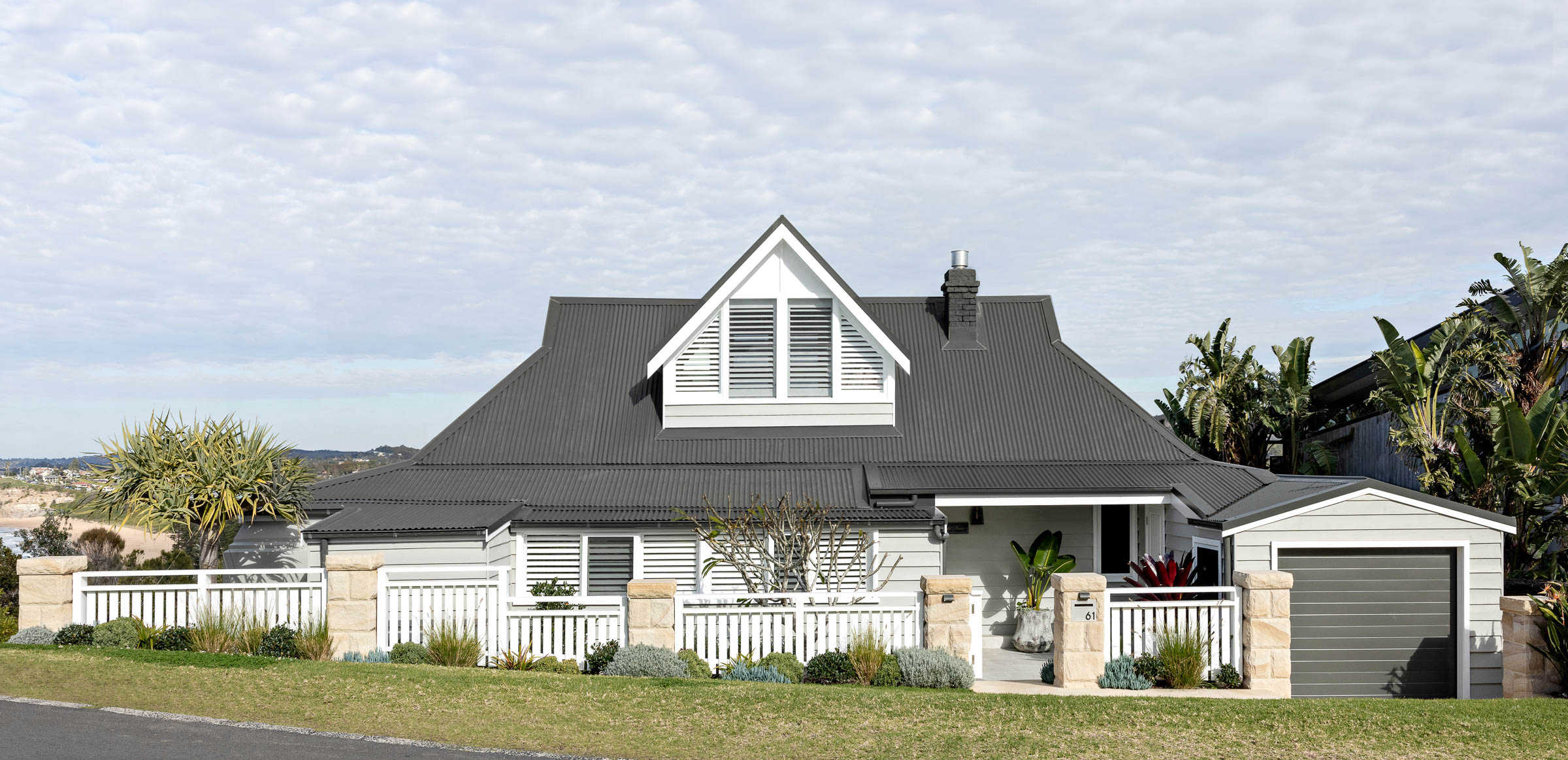Property of the Week: 8-10 Howard St, Kew
Home to Sir Robert Menzies and Dame Pattie, this grand Melbourne estate is a piece of Australian political history.
It may be a well-worn cliche, but if these walls could talk there would be plenty of state secrets to share. The landmark residence at 8-10 Howard St, Kew was once the private residence of Sir Robert Menzies and Dame Pattie between 1929 and 1949, during the Prime Minster’s first term in the top job. He later held the role again from 1949 to 1966, making him Australia’s longest serving Prime Minister.
Historical land records indicate that the Howard St property was sold to Leonard Clinton Shaw, brother-in-law of Pattie Menzies. Robert and Patti then moved to live into The Lodge in Canberra.
The stately arts and crafts era home was built in the 1910s and has reportedly played host to a long list of dignitaries and VIP guests. As rumour has it, the drawing room of the Kew property is where Menzies crafted his iconic speeches and held many clandestine meetings.
Today the imposing five-bedroom residence, which sits on a vast 1874sq m land parcel in the coveted Studley Park precinct, has come to market through Marshall White agents James Tostevin and Chris Barrett with a price guide of $8.3 million to $8.9 million.
According to CoreLogic, the property last sold in 2018 for $7.75 million.
Beyond the expansive parklike grounds that to pay homage to celebrated Australian landscaper Edna Walling, the two-storey house is packed with meticulously maintained period features.
Showcasing the best of arts and crafts design influences, the home has a charming tuck-point brick façade, a tessellated tile veranda, coloured leadlight glass windows, dark stained wood panelling inside, as well as high decorative ceilings and cornices.
The large foyer divides the lower level into two distinct zones; big formal rooms and more casual family-friendly spaces. Built for entertaining on a grand scale, both the lounge and dining rooms rooms have original fireplaces and open out to either the undercover veranda or enclosed sunroom.
Also on the ground level, a spacious family room with yet another fireplace connects to an everyday meals area, and the contemporary kitchen comes complete with granite surfaces, a Paul Bocuse stove, an integrated Miele dishwasher, a walk-in pantry and wine cellar. A home office, or potential guest bedroom, plus a large laundry and two powder rooms round out the lower level floor plan.
Up via a majestic timber staircase, four big bedrooms have fireplaces and built-in wardrobes, while the primary suite is home to a palatial ensuite and dressing room. This accommodation level also houses two family bathrooms and a rear balcony that overlooks the grounds.
Outdoors there are multiple lifestyle features including a north/south tennis court with lighting, a unique rounds swimming pool and all-weather terraces.
Other features include an alarm, hydronic heating, a 60,000L underground tank, a garden shed, a remote double garage and additional off-street parking.
Located on the old Oakland Estate, the Menzies’ former home is close to popular eateries, Xavier College, St Vincents Private Hospital and golf courses.
Expressions of interest close on March 11, at 5pm for 8-10 Howard St, Kew. The home is listed with a price guide of $8.3 million to $8.9 million through agents James Tostevin and Chris Barrett of Marshall White.
Records keep falling in 2025 as harbourfront, beachfront and blue-chip estates crowd the top of the market.
A divide has opened in the tech job market between those with artificial-intelligence skills and everyone else.
The 2026 McGrath Report warns that without urgent reforms to planning, infrastructure and construction, housing affordability will continue to slip beyond reach for most Australians.
Australia’s housing market has reached a critical juncture, with home ownership and rental affordability deteriorating to their worst levels in decades, according to the McGrath Report 2026.
The annual analysis from real estate entrepreneur John McGrath paints a sobering picture of a nation where even the “lucky country” has run out of luck — or at least, out of homes.
New borrowers are now spending half their household income servicing loans, while renters are devoting one-third of their earnings to rent.
The time needed to save a 20 per cent deposit has stretched beyond ten years, and the home price-to-income ratio has climbed to eight times. “These aren’t just statistics,” McGrath writes. “They represent real people and real pain.”
McGrath argues that the root cause of Australia’s housing crisis is not a shortage of land, but a shortage of accessibility and deliverable stock.
“Over half our population has squeezed into just three cities, creating price pressure and rising density in Sydney, Melbourne and Brisbane while vast developable land sits disconnected from essential infrastructure,” he says.
The report identifies three faltering pillars — supply, affordability and construction viability — as the drivers of instability in the current market.
Developers across the country, McGrath notes, are “unable to make the numbers work” due to labour shortages and soaring construction costs.
In many trades, shortages have doubled or tripled, and build costs have surged by more than 30 per cent, stalling thousands of projects.
Need for systemic reform
McGrath’s prescription is clear: the only real solution lies in increasing supply through systemic reform. “We need to streamline development processes, reduce approval timeframes and provide better infrastructure to free up the options and provide more choice for everyone on where they live,” he says.
The 2026 edition of the report also points to promising trends in policy and innovation. Across several states, governments are prioritising higher-density development near transport hubs and repurposing government-owned land with existing infrastructure.
Build-to-rent models are expanding, and planning reforms are gaining traction. McGrath notes that while these steps are encouraging, they must be accelerated and supported by new construction methods if Australia is to meet demand.
One of the report’s key opportunities lies in prefabrication and modular design. “Prefabricated homes can be completed in 10–12 weeks compared to 18 months for a traditional house, saving time and money for everyone involved,” McGrath says.
The report suggests that modular and 3D-printed housing could play a significant role in addressing shortages while setting a new global benchmark for speed, cost and quality in residential construction.
Intelligent homes
In a section titled Weathering the Future: The Power of Smart Design, the report emphasises that sustainable and intelligent home design is no longer aspirational but essential.
It highlights new technologies that reduce energy use, improve thermal efficiency, and make homes more resilient to climate risks.
“There’s no reason why Australia shouldn’t be a world leader in innovative design and construction — and many reasons why we should be,” McGrath writes.
Despite the challenges, the tone of the 2026 McGrath Report is one of cautious optimism. Demand is expected to stabilise at around 175,000 households per year from 2026, and construction cost growth is finally slowing. Governments are also showing a greater willingness to reform outdated planning frameworks.
McGrath concludes that the path forward requires bold decisions and collaboration between all levels of government and industry.
“Australia has the land, demand and capability,” he says. “What we need now is the will to implement supply-focused solutions that address root causes rather than symptoms.”
“Only then,” he adds, “can we turn the dream of home ownership back into something more than a dream.”
BMW has unveiled the Neue Klasse in Munich, marking its biggest investment to date and a new era of electrification, digitalisation and sustainable design.
With two waterfronts, bushland surrounds and a $35 million price tag, this Belongil Beach retreat could become Byron’s most expensive home ever.





























